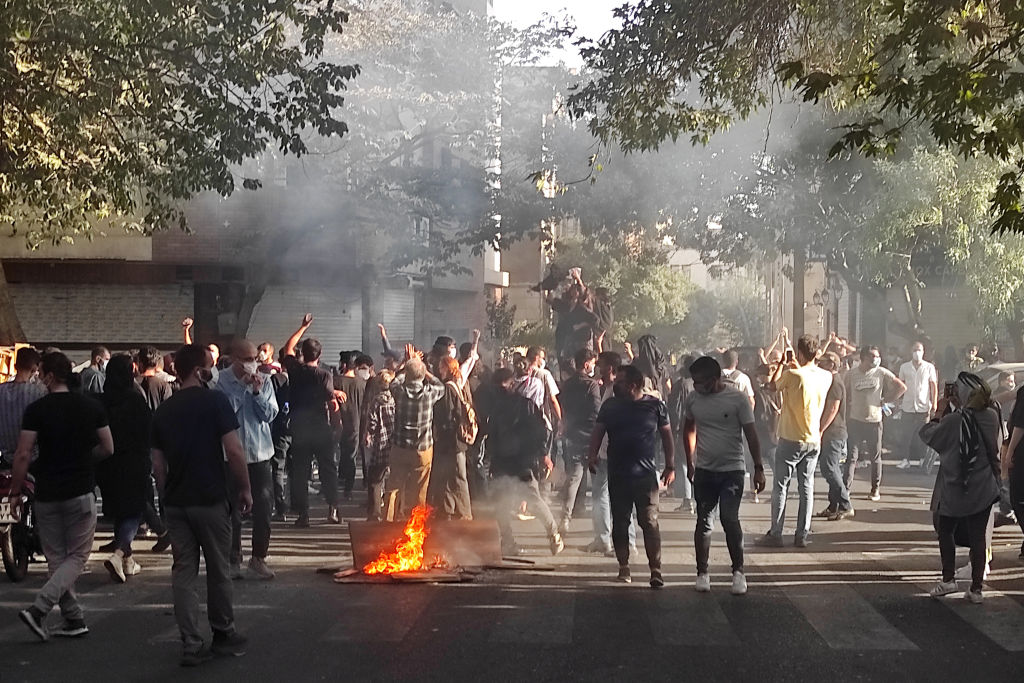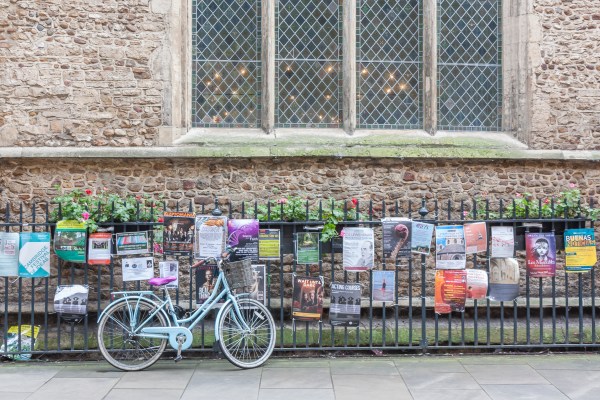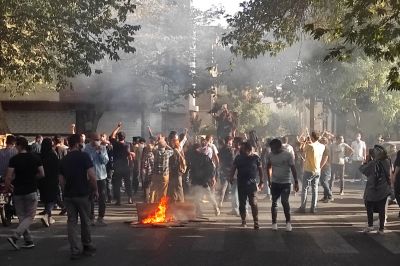Iran was the world’s most sanctioned country for many years, at least until Russia invaded Ukraine. Sanctions opponents have long argued that these measures punish the Iranian people more than the regime—a talking point that persists even as the revolt in Iran intensifies. Yet the opposite is true: Sanctions are already helping Iranians exercise more rights.
Objection to sanctions comes from anti-interventionists on both the right and left. In Reason, Bonnie Kristian wrote two months ago that “however these protests go, I do feel confident saying this: They do not vindicate ‘maximum pressure,’ the onerous sanctions regime instituted by former President Donald Trump ... and continued by President Joe Biden to this day.” Hoda Katebi, an Iranian-American far-left activist, recently opined in the Los Angeles Times, “To support [the revolutionaries’] cause, we need to demand an immediate lifting of sanctions ... so that they can continue to rise up against oppression in all forms.” Dylan Williams of the progressive advocacy group J Street tweeted an attempt to expose the alleged hypocrisy of people who support both sanctions and the protesters. In 2018, the Atlantic Council’s Holly Dagres repeated a popular left-wing sentiment that withdrawal from the Joint Comprehensive Plan of Action and the reimposition of sanctions would marginalize the reformists and help the hardliners in Iran.
But two things can be and are true at the same time: Sanctions are hurting the Iranian people materially and helping them politically. However much sanctions might be hurting everyday Iranians, they are causing more harm to the brutal regime that oppresses them.
The sanctions’ negative effect on the material well-being of Iranians is collateral damage. The only poll conducted of the Iranian people and outside of Iran to circumvent regime censorship also shows that 86 percent of Iranians credit the Islamic Republic as the primary cause for their economic hardships, compared with 10 percent who said sanctions. And they are right. The half-communist, half-kleptocratic, fully corrupt structure of the economy has much more to do with Iranians’ economic struggles than the sanctions.
Case in point: The economic well-being of Iranians deteriorated after the enactment of the Iran nuclear agreement, which eased some sanctions. In fact the unemployment rate rose from 11.2 percent to 12.6 percent after the deal. Child labor and beggary kept peaking. In 2017, the last year of the U.S. compliance with the agreement, Iran’s GDP grew by 2.8 percent, far behind the 8 percent inflation rate. The first major anti-regime, violent protests in Iran happened in 2017 and were triggered in response to high prices and corruption. Iran’s position on economist Steve Hanke’s world Misery Index in 2017, before the U.S. withdrew from the agreement and Donald Trump reimposed sanctions, was No. 11.
If foreign sanctions were having a significant negative effect on Iranians, we’d expect to see those sentiments on display in protests. But demonstrators focus their ire on the regime’s own behavior—common slogans include “neither Gaza, nor Lebanon, my life only for Iran” and “leave Syria alone, do something for us.” In the past decade, there has not been a single protest against the United States or sanctions in Iran not orchestrated by the regime. But we have seen demonstrations of anti-Palestinian sentiments.
Meanwhile, sanctions have helped Iranians exercise more social freedoms. They bring alcohol from home to restaurants and cafes and drink in public. There are even instances of public dancing. Literally and metaphorically, observation of the hijab law is becoming looser and looser. Regime apologists outside of Iran would claim that this was because of the reformist administration of Hassan Rouhani, who served as president from 2013 to 2021. But in reality the regime hasn’t had enough money to hire sufficient high-quality law enforcement agents. The police commander in Iran is appointed by the supreme leader and at the recommendation of the minister of the country. The current commander, Hossein Ashtari, is a hardliner who was appointed during the Rouhani administration and at the recommendation of then-minister of the country, hardliner Abdolreza Rahmani Fazli. The death of Masha Amini—which sparked the current uprising—is further evidence. The regime has been trying to compensate for its personnel shortage with increased brutality.
The impoverishment that sanctions have imposed on the regime is now an obstacle to cracking down on protests for the same reason. Many videos depict demoralized security officers. Here, for instance, the police commander is trying to ideologically mobilize a unit, with his men showing an obvious lack of enthusiasm. That one of the men recorded and posted the unflattering video is itself notable. There are plenty of videos of people resisting a small number of agents or agents not engaging with protesters. There are even videos showing solidarity between security forces and the people. One source I spoke to, who lives in a small town, reports that authorities in Tehran contacted 100 security personnel from the town to deploy to Tehran. Sixty simply didn’t respond. Half of the remaining 40 responded but declined the request. The other 20 agreed to go but made it clear that they wouldn’t use violence against the protesters. While in the past the regime could buy off its own rank and file with money, that’s not an option anymore, which is why Iraqi Hashd al-Shaabi and Lebanese Hezbollah militiamen are now deploying to Iran.
Sanctions have also made disconnecting the internet too expensive. During the 2019 protests, Iran disconnected the internet for two weeks. Estimates of its negative economic effect go as high as $1.5 billion. That year, Iran’s economy shrank by 12 percent, and the internet shutdown accounted for 0.4 percent of that 12 percent. Now that Iran is even poorer, the cost is a deterring factor to further shutdowns.
Sanctions proponents acknowledge they bring tradeoffs, and the negative effects are a necessary evil to weaken the regime. While the Iranian people are enduring some economic harm, the sanctions are also making it more difficult for the regime to systemically oppress its people and suppress their revolt. Those who desire lifting sanctions, those in the Biden administration who still cling to the hope of reaching a nuclear agreement and in return flood the Islamic Republic with cash, should keep this in mind.






Please note that we at The Dispatch hold ourselves, our work, and our commenters to a higher standard than other places on the internet. We welcome comments that foster genuine debate or discussion—including comments critical of us or our work—but responses that include ad hominem attacks on fellow Dispatch members or are intended to stoke fear and anger may be moderated.
With your membership, you only have the ability to comment on The Morning Dispatch articles. Consider upgrading to join the conversation everywhere.